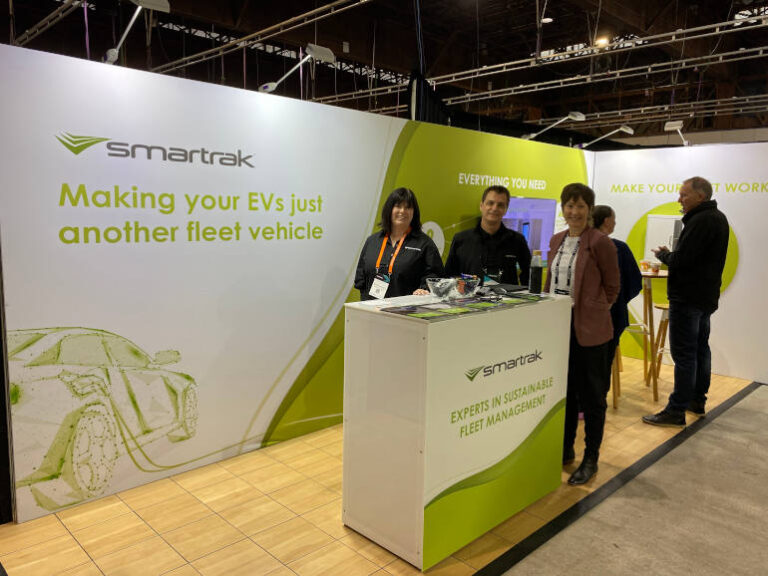Dr. Sharlene Smith, Business Manager for Sustainability Initiatives at Smartrak, recently discussed the company’s work on electric vehicle (EV) fleet management and its customer-focused approach to product development during the 2024 Electro Mobility Summit in Auckland. I caught up with her after presentation and she highlighted the significance of customer involvement in shaping solutions, the unique challenges of EV transition, and the role of the Special Interest Group (SIG) in this process.
Customer-centric development
Smartrak has always engaged customers through user groups, integrating their feedback into its standard roadmap. However, the SIG takes this engagement further, with in-depth discovery sessions that involve a broader range of stakeholders, including operations and finance teams. Dr. Smith explained.
“When managing EVs in fleets, it’s vital to understand the specific challenges customers face, such as data requirements for decision-making about which EVs to add next or the installation of charging infrastructure.”
She highlighted Griffith University as an example, where Smartrak’s collaboration allowed the university’s engineering team to align their solar panel and charging infrastructure projects with data insights from Smartrak’s new charging software-as-a-service (SaaS) report.
This detailed analysis has enabled Griffith to make data-driven decisions about installing new chargers and improving the “greenness” of their charging infrastructure. On-site charging at Griffith is greener than public or home charging, showcasing how different teams within an organisation can use Smartrak’s data to drive sustainable outcomes.
The complexities of EV integration
Compared to traditional vehicles, EVs bring unique challenges that impact a wider range of stakeholders. Dr. Smith pointed out that the higher costs of EVs, nearly twice that of traditional vehicles, complicate fleet management in Australia. For instance, the Reportable Fringe Benefits Tax (FBT) can have a significant impact, even if organisations themselves are exempt. “The cost of an EV can push staff with assigned vehicles into higher tax brackets, affecting child support payments and other financial obligations,” Dr. Smith explained.
Smartrak’s telematics solution is designed to help fleet managers track vehicle usage and optimise tax reporting. By accurately recording vehicle use for business purposes, organisations can lower their reportable FBT liability, offering both cost savings and clearer audit trails. This solution is useful not only in Australia but also in New Zealand, where similar FBT regulations exist.
Special Interest Group’s influence
The SIG allows customers to have a direct say in Smartrak’s product development. The group, currently recruiting members for 2025, provides a platform for customers to influence the product roadmap based on their most urgent needs. Dr. Smith emphasised, “Being a SIG member gives customers the power to prioritise the development of specific features and to trial solutions in real-world scenarios.”
This collaborative approach has been instrumental in addressing complex fleet management issues. Meridian Energy, a SIG member, has already transitioned its entire fleet to EVs and provided valuable insights to other members, such as Griffith University and Aurecon. Meridian’s experiences with importing EVs from the UK and experimenting with various models have been particularly helpful. They shared insights on which models perform well under specific conditions, potential pitfalls, and strategies for navigating infrastructure challenges.
Addressing infrastructure challenges
One common challenge among SIG members is the limited control over charging infrastructure in leased buildings. In such situations, organisations often lack authority over charger types or sizes and must share chargers with other tenants. Dr. Smith highlighted how Smartrak’s open dialogue with stakeholders helps identify additional data requirements, aiding organisations in planning and adapting to these constraints.
By integrating various perspectives, Smartrak’s solution ensures a holistic view of fleet management that goes beyond vehicles to encompass broader operational and strategic needs.
Looking ahead
Dr. Smith expressed optimism about the future of the SIG and the ongoing development of customer-centric solutions. With new members expected in 2025, including government organisations, Smartrak aims to build solutions that focus on the most pressing issues identified by customers. “We want to develop solutions that not only address current pain points but also prepare customers for the long-term challenges of fleet electrification,” Dr. Smith noted.
The SIG’s influence extends beyond product features. Members help shape the sequence of developments, ensuring that Smartrak addresses the most critical needs first. This hands-on involvement distinguishes Smartrak from traditional software companies that dictate the product roadmap with minimal customer input.
The broader impact
Smartrak’s work with SIG members has underscored the importance of involving a wide range of stakeholders in fleet transitions. By enabling collaboration among operations, finance, and sustainability teams, Smartrak ensures that its solutions are not just technically robust but also aligned with the strategic goals of each organisation. This approach is particularly valuable as fleets increasingly embrace EVs, where costs, infrastructure, and compliance intersect.
Dr. Smith concluded by reiterating Smartrak’s commitment to sustainability and innovation.
“The cost and complexity of transitioning to EVs demand precise planning and collaboration. Our goal is to make this process as seamless as possible for our customers by providing the right data and tools.”
Smartrak’s focus on customer-driven development and stakeholder engagement reflects a broader trend in fleet management, where sustainable solutions are shaped by those who use them daily. As EV adoption grows, such collaborative efforts will likely become the norm, fostering smoother transitions and more effective sustainability initiatives.






